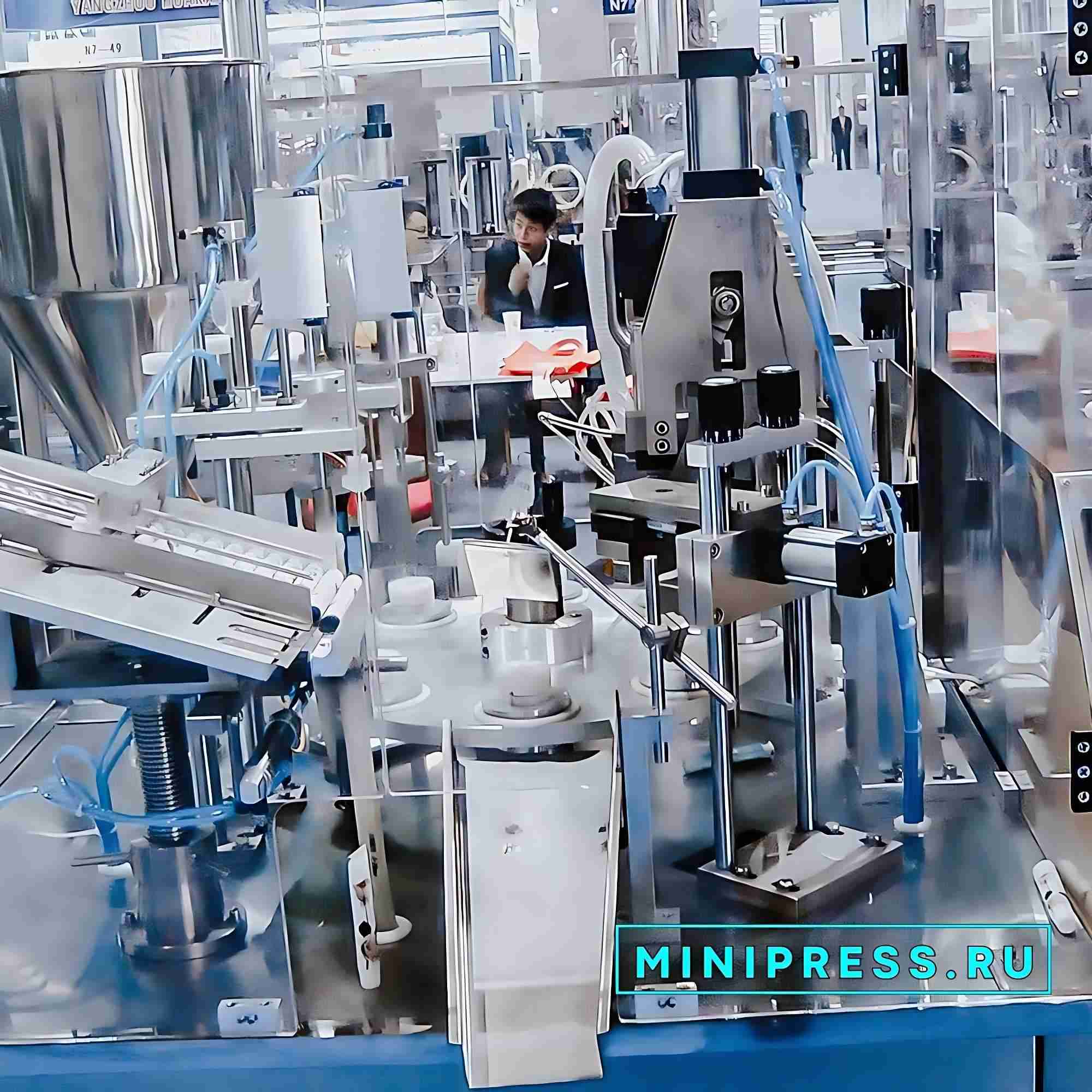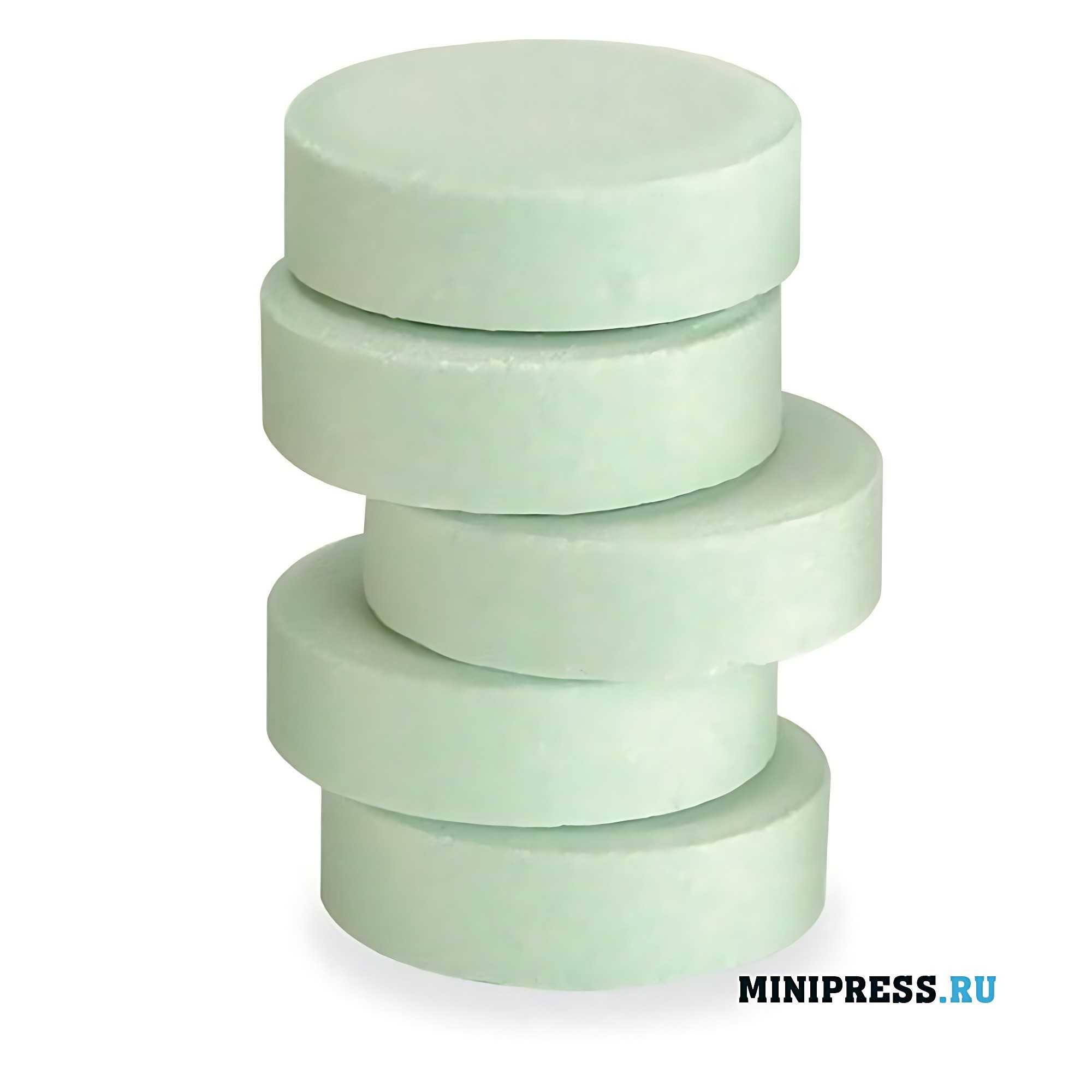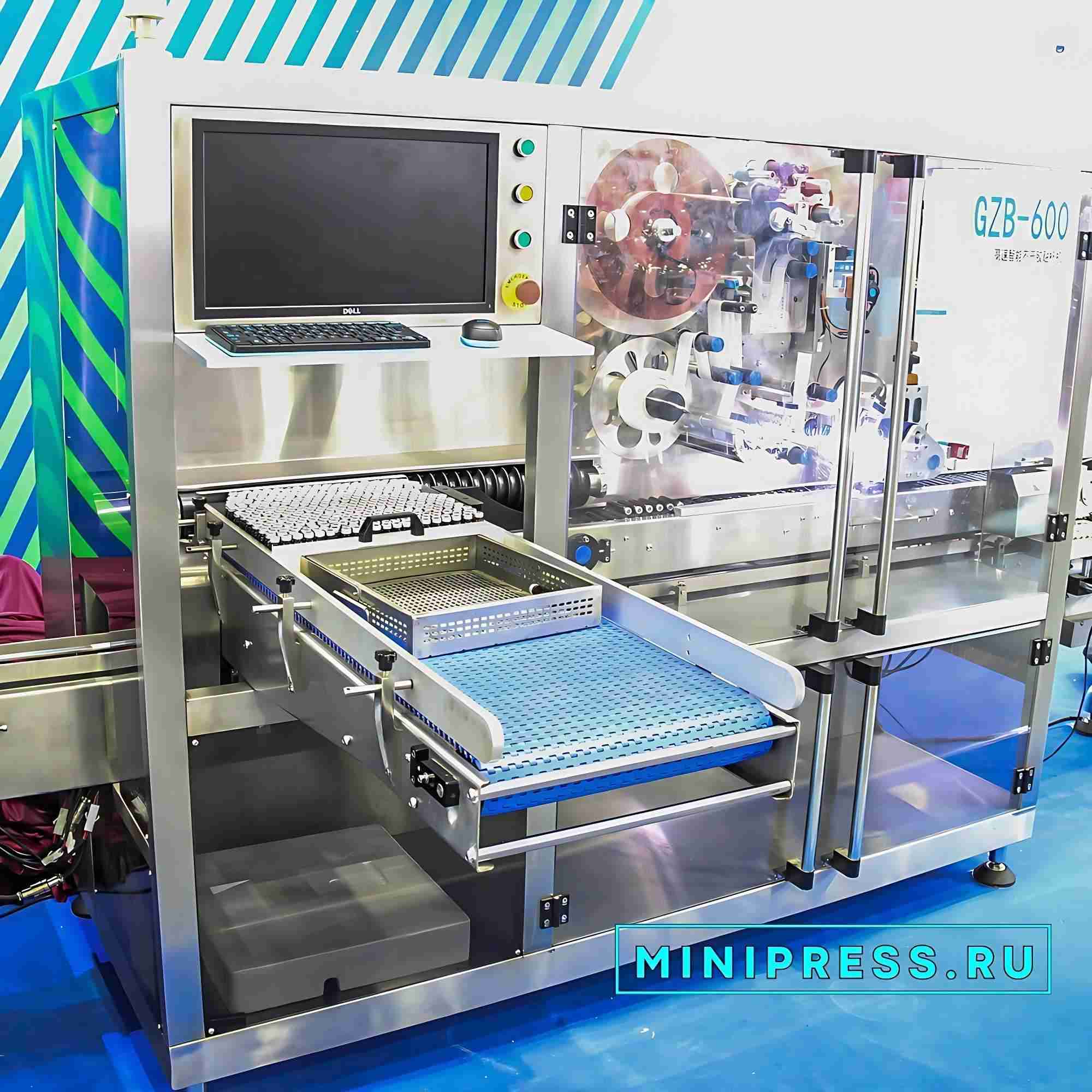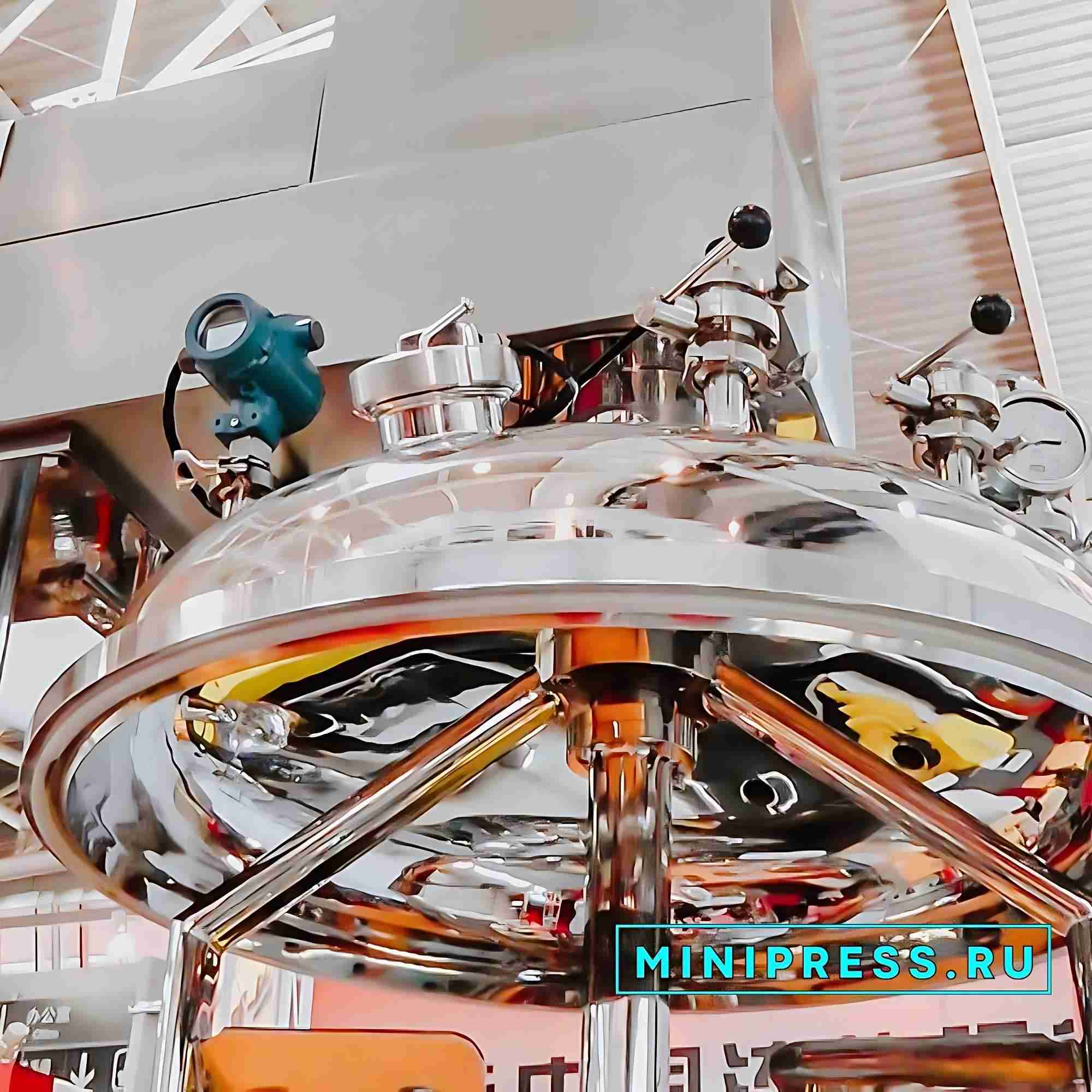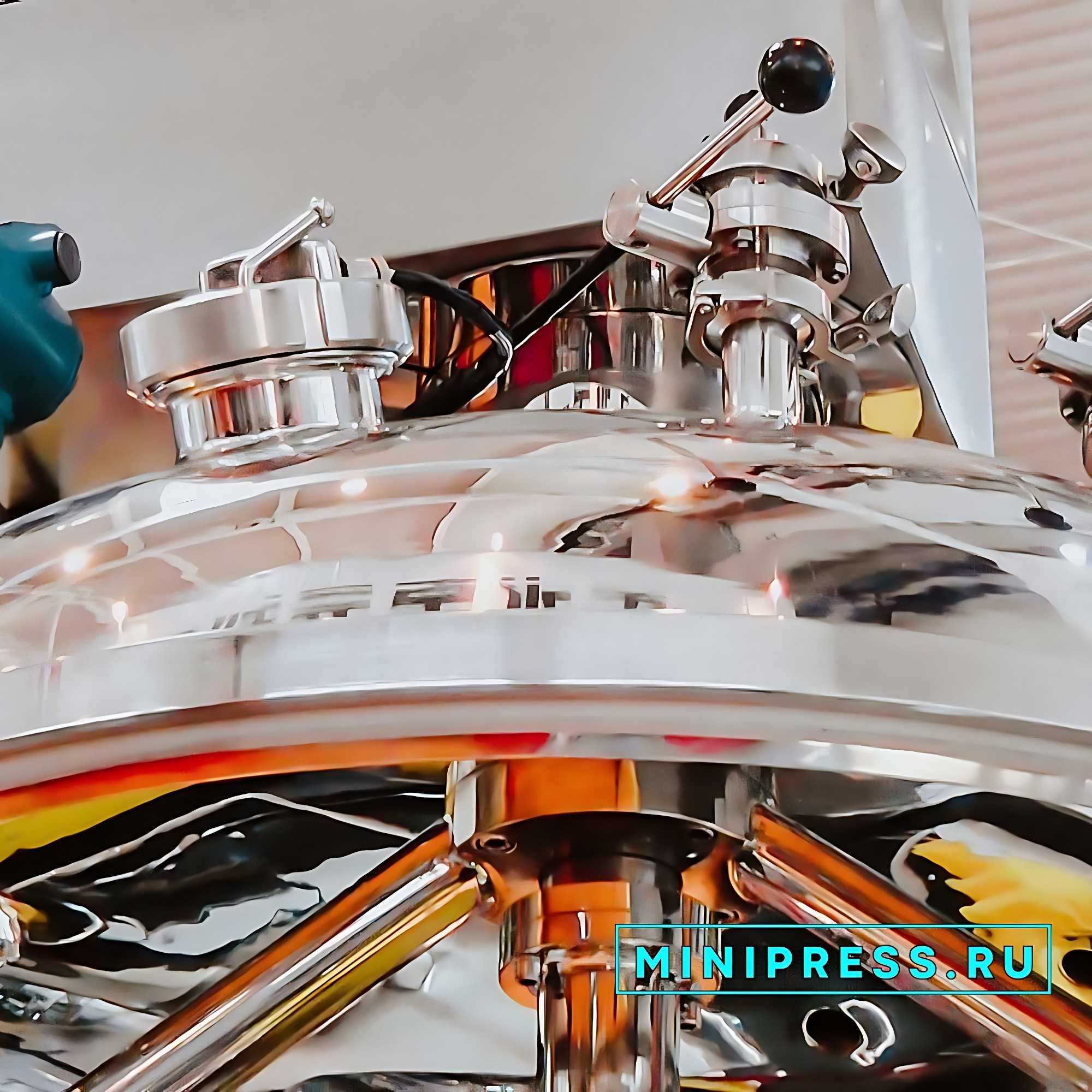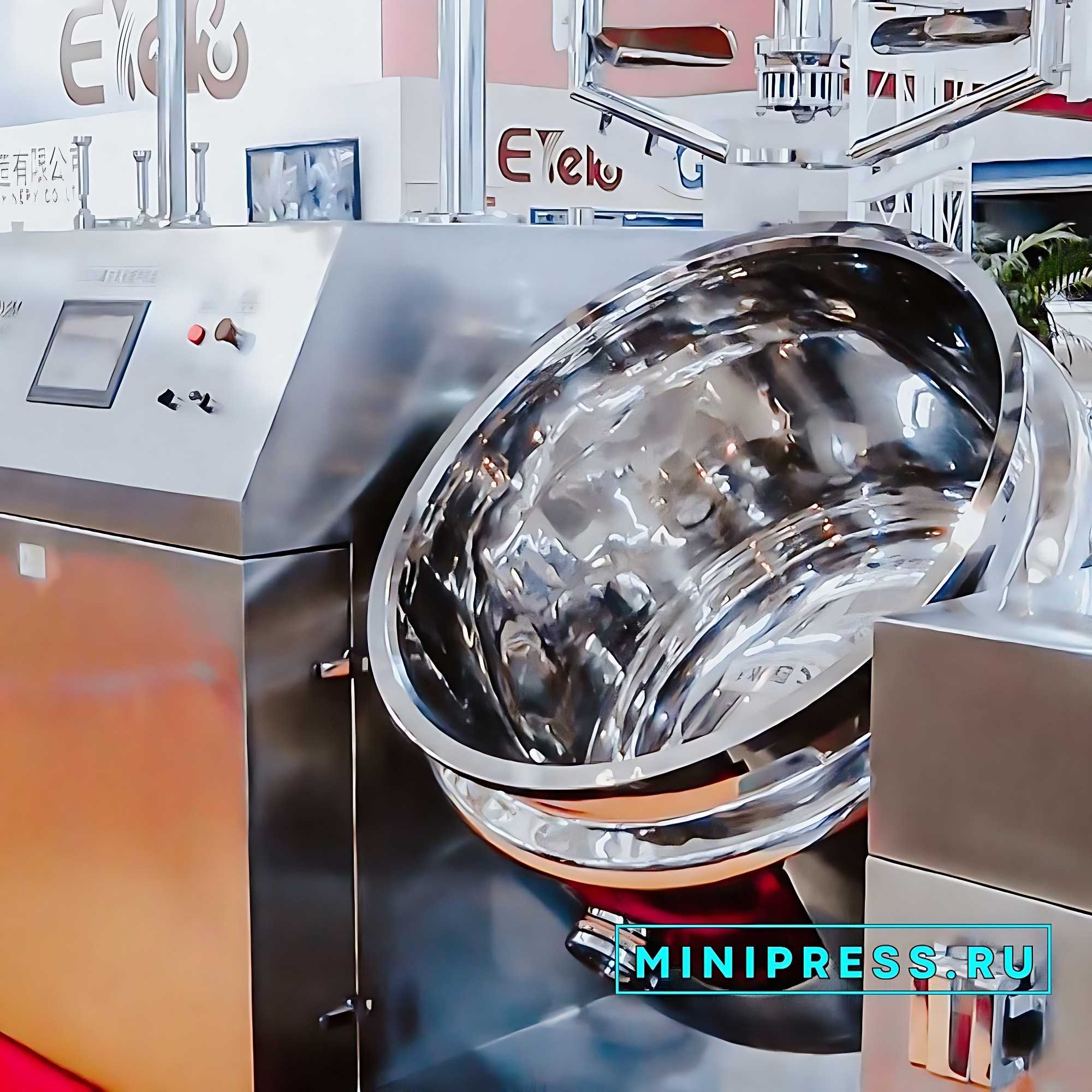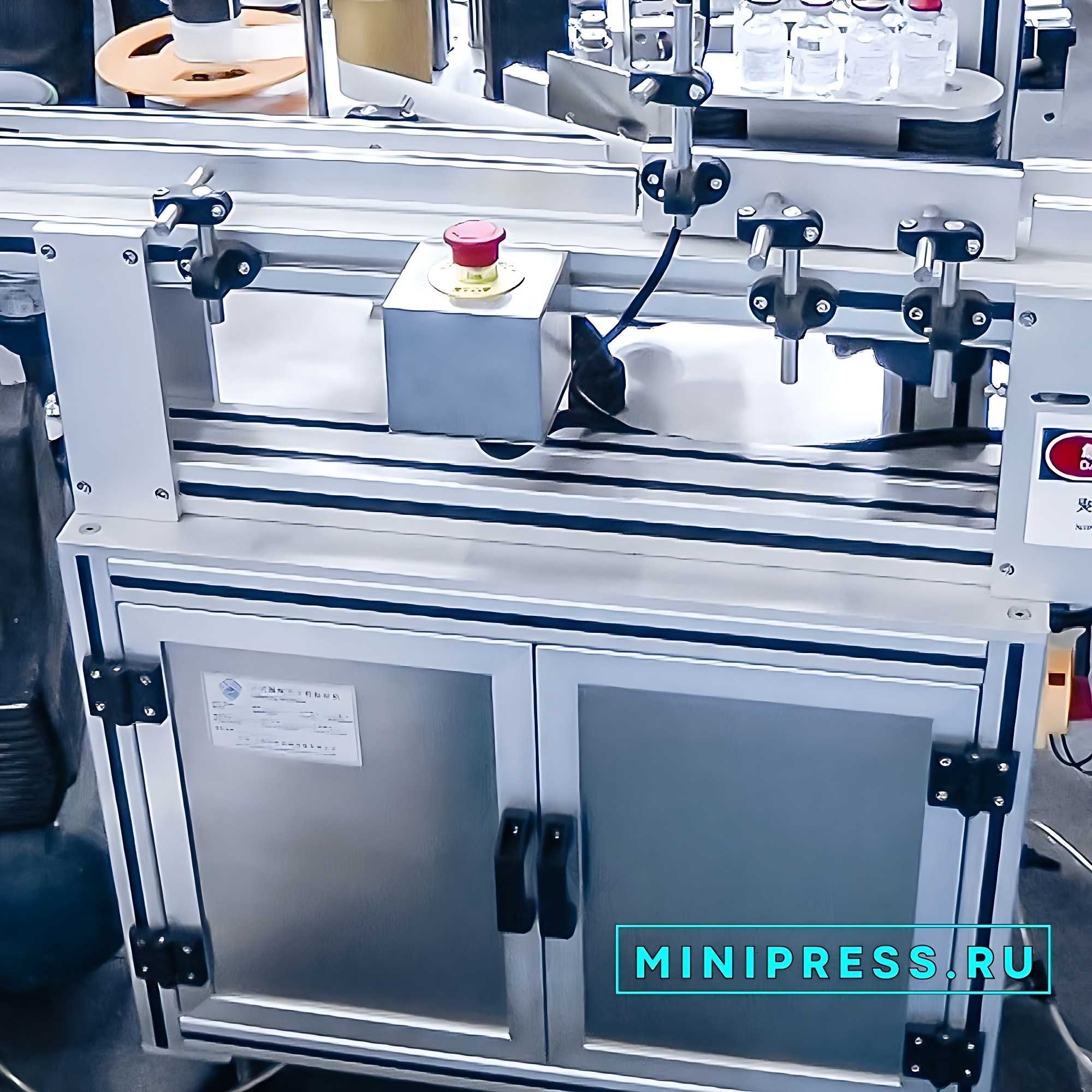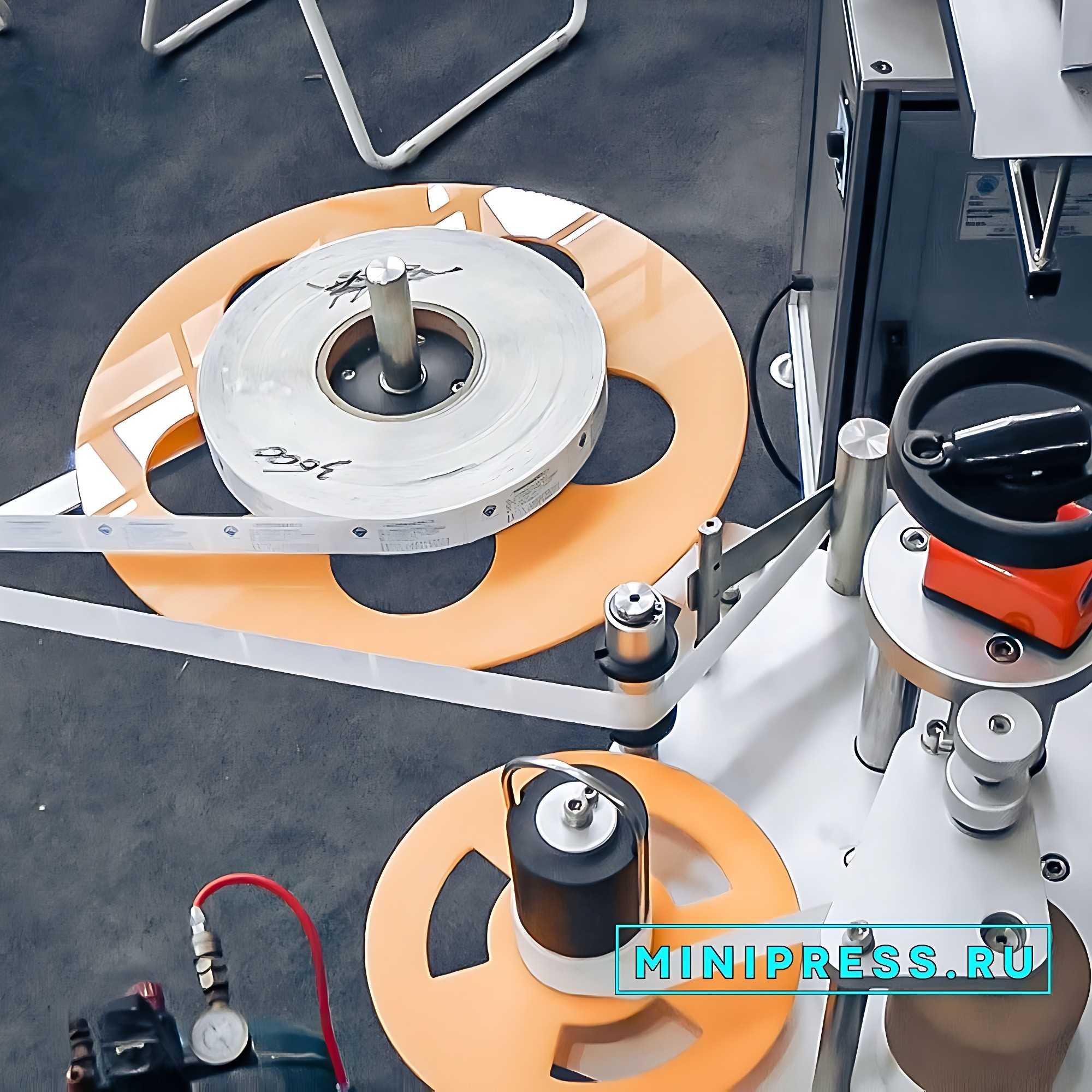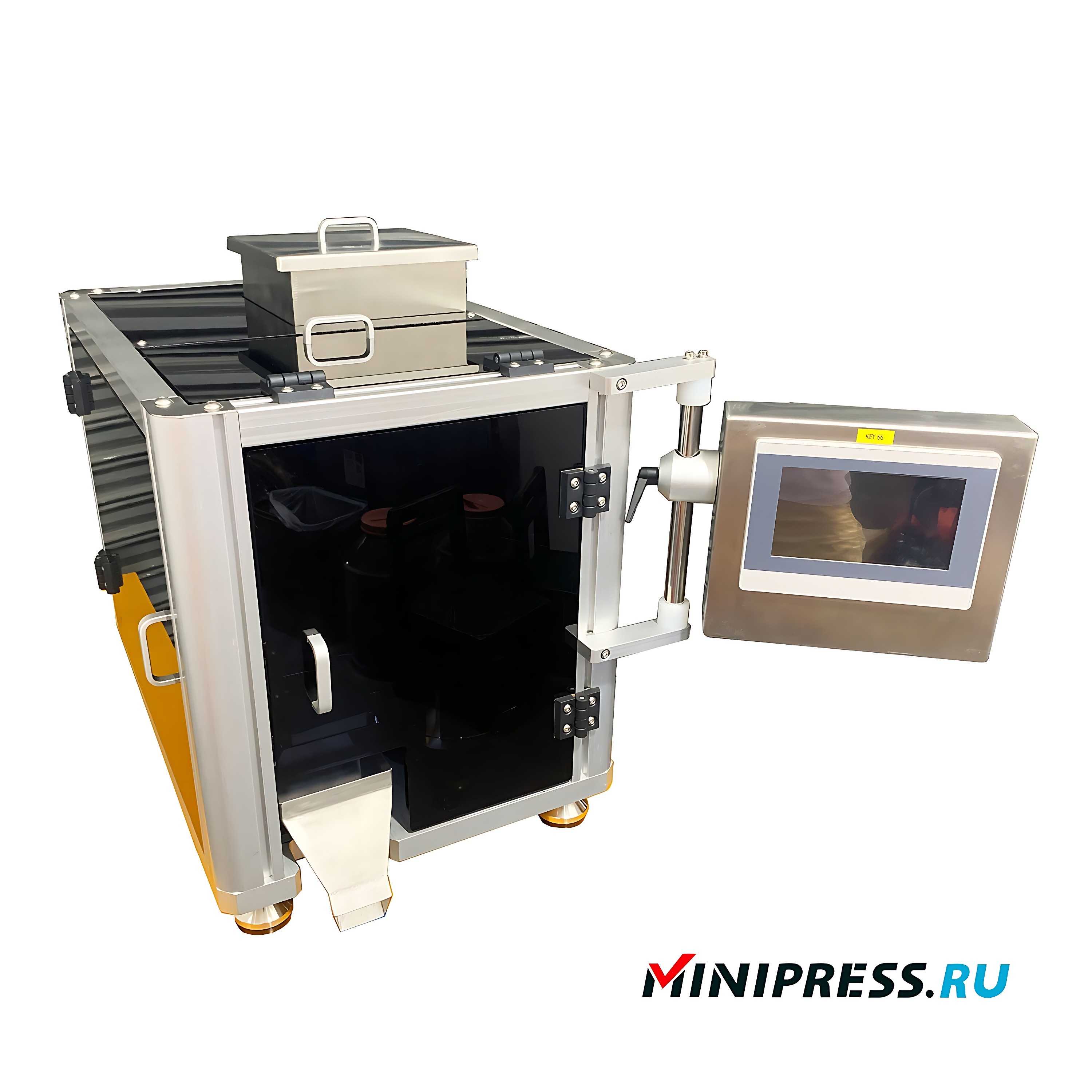 Video review of the model
Video review of the model
 Our service and customer service
Our service and customer service
If, for example, the tablets are ejected with a damaged or uneven surface, this indicates that the mass is strongly adherent or lacks sliding agents, or that the pressing surfaces are not smooth enough. If the tablet has edges, the diameter of the punches used is small. If the tablet surface is bumped, the bottom punch is not raised high enough and its position must be adjusted.
If the tablets disintegrate when ejected, the pressing pressure should be increased or more binders should be added. If the tablets break up, the pressure is too high or the granulate is too dry. The tabletting process may produce tablets with the following defects, such as: Insufficient mechanical strength – observed with insignificant press pressure, insufficient concentration of binder, adhesive and lubricant, and low plasticity of substances. Poor quality coating of tablets. It can be avoided by adding microcrystalline cellulose to the coating, which improves the plasticity of the coating. Adhesion. When the particles of the tablet mass have a higher adhesion to the punch than to each other, adhesion of the particles to the tool occurs. Adhesion at high stock moisture levels to the top punch can cause failure of the apparatus. High stock moisture and insufficient amounts of opening agents also lead to sticking. Excessive rubbing. Excessive kneading of the mass can cause the matrix parts to stick together. Reduction in tablet weight and formation of a non-glossy surface occurs. Reduced shelf life – may occur as a result of the use of inaccurate amounts of loosening, binding, moistening auxiliaries, insufficient pressure, which ultimately leads to incomplete action of the active substance. Inaccurate dosage. If the tablet mass has insufficient flowability, the matrix is filled unevenly. This can be avoided by optimizing the particle size or by adding an excipient such as aerosil. Therefore, to avoid defects in the tabletting process, the optimum parameters should be selected on a case-by-case basis.
 Pharmaceutical Glossary
Pharmaceutical Glossary
 Technical specifications
Technical specifications
During the loading operation, the top slider roller with punch is at the highest point of the upper caper (stage I). It then slides down the sloping kapir. The punch touches the matrix hole, plunges into it and compresses the material. The pressure builds up and reaches its maximum at the moment when the slider roller is under the pressure of the roll (pressing operation – stage II). After that, the roller with the punch starts to climb up the capir and reaches the maximum. The lower slider makes the following movements: in the loading stage, its roller is supported by the roller that regulates the volume of the matrix hole. The lower slider moves along the straight capir. During the pressing operation, its roller is lifted by the pressing roller, so that the lower punch exerts pressure on the tablet material from its side. The capir then moves slightly upward, causing the lower punch to push the tablet out (ejection operation – stage III).
After that, due to the lowering of the capir, the lower punch also goes downwards and everything is repeated again. Below is a description of the features of domestic rotary tablet machines. In general, RTMs can have from 12 to 55 dies (positions) in the rotor. Besides, they can be single-flow (with one feeding hopper) and double-flow (with two feeding hoppers). In the latter case, the entire production process is completed in half a rotation of the rotor and, as a result, the productivity of the PTM is dramatically increased. Such a high-performance machine is, in particular, RTM-41, which is a dual-flow machine with 41 pairs of press tools. This machine allows to produce tablets of 5-15 mm and 20 mm diameter. The RTM-300M machine is used to produce cylindrical-shaped tablets of small diameters with flat and spherical ends. Since in RTM the pressure is bilateral and increases (is removed) gradually, tablets are of high quality. These machines work evenly and do not dust. An agitator can be installed in the feed hopper. The rotating rotor allows the installation of devices for powdering the matrix hole before loading, as well as after it (to pollinate the surface of the filled matrix). Some designs have brush wiping or cleaning devices to keep the punches clean. Rotary press-automatic machines are produced, equipped with a vibrating feeder, which can, by adjusting the amplitude and frequency of vibrations of the vibrating, filling part of the feeder, break the forces of adhesion between powder particles, thus significantly increasing its mobility and compensating for the lack of bulkiness.
 Additional information
Additional information
The productivity of automatic machines equipped with a vibrating feeder is increased. In this case, granulation is also required, but with slightly reduced requirements for granulate homogeneity. In domestic tablet presses, the tablet mass and possible mechanical inclusions are controlled during the tabletting process. For mass control there are automatic devices – in case of deviation of tablet mass from the preset one a signal lamp is switched on. Automatic control for metal inclusions is performed with the help of a device that detects and removes tablets with metal inclusions from the’flow. To remove from the surface of tablets coming out of the press, dust fractions are used dedusters. Tablets pass through a rotating perforated drum and are cleaned of dust, which is sucked out of the dedusters by special devices. Tableting of drugs usually occurs at pressures of 25-250 mPa; higher pressures are rarely used. Table 4.8 gives an example of the main technical parameters of rotary tabletting machines. Although RTMs are technically far superior to eccentric machines, they have some disadvantages, namely: complex construction; require more spare punches and dies. The quality of tablets is influenced by the amount of pressure, pressing speed, condition and wear resistance of the press tool, which is subjected to quite a lot of wear and tear, as it experiences heavy loads. The durability of dies is 2-3 times less than that of punches, which is explained by chemical interaction of the matrix material with the tablet mass, rigid loading of the matrix, friction of particles of the pressed material and the tablet against the walls of the matrix;
more difficult preparation for pressing; more labor-intensive cleaning; large variation in mass deviation from the nominal value due to the use of dozens of sets of press tools. Eccentric machines use only one set of press tools and therefore the variation in the mass of individual tablets is less than when pressing on RTM. Based on the above disadvantages it can be concluded that rotary tablet machines are cost-effective only for mass production. Before pressing, any tablet machine must be set up, calibrated and adjusted optimally. Before starting the process, a test tabletting process is carried out by starting the machine manually, which results in the required tablet weight, proper strength and disintegration as well as the elimination of external imperfections.
Order status tracking
We received our order (BG-150 film coating boiler) in the box there was no spraying nozzle !!! 25/12/2025 02:07
Hello Wyatt, we checked with the factory. Your nozzle was not received in time for the shipment of the main machine. We will now deliver it to you by DHL express mail. 25/12/2025 02:09
YR-90 dry and wet powder granulator YR-90 month has already passed. Hurry up the factory. 25/12/2025 02:17
Jayden, good afternoon. The factory has shipped your equipment to our representative, now is forming a consolidated shipment for shipment to customs. We will keep you informed. 25/12/2025 02:18
Good day, delivery time of semi-automatic drum filling machine DF-10 to Kavala, will the courier call us? 25/12/2025 02:27
Logan, good afternoon. Natalia will contact you, the shipment has passed customs clearance at the border. 25/12/2025 02:28
Good day , Electronic conveyor belt package weight detector DK-05 when will we receive in Vienna ? 25/12/2025 02:37
Hello Sofia, your shipment is in the customs warehouse, In the afternoon your manager Natalia will contact you. 25/12/2025 02:39
PU-420 flow-pack packaging machine along with 500 kg packaging , delivery to Honolulu. Please confirm the delivery time. 25/12/2025 02:47
Good afternoon Alexander, your shipment has left. Arrival time in the interval from 10:00-12:00. The driver will call you back later. Please organize prompt unloading. 25/12/2025 02:49
Good afternoon, we have contracted you to deliver a GK-40 dry powder granulator to Stockholm, do you deliver to the terminal or to the actual address? 25/12/2025 02:57
Hello Lila, we ship all over Europe and the US including to Stockholm . The price in the catalog includes any delivery our customer asks for. 25/12/2025 02:59
Good afternoon! semi-automatic liquid filling machine in barrels DF-13 , a copy of the payment is sent to the post. Start the order to work. 25/12/2025 03:07
Sofia, good afternoon! We have seen your payment, we receive SMS from the bank. Please send drawings of barrels and answers to our questions in correspondence. 25/12/2025 03:10
Natalia hello, what about the counter table tablets and capsules counter TC-10, account #121. 25/12/2025 03:17
Hello Alexander, Our manager Natalia tomorrow until 13:30 will call you on WhatsApp. I see the tracking status, on the carrier's website, the shipment will arrive to Milna in 15 days. 25/12/2025 03:19
Good day, delivery time of semi-automatic drum filling machine DF-10 to Leicester, will the courier call us? 25/12/2025 03:27
Nova, good afternoon. Natalia will contact you, the shipment has passed customs clearance at the border. 25/12/2025 03:30
Dear Roman, good afternoon, vacuum powder conveyors QV-05 in quantity of 4 pieces, already on their way to Braila ? 25/12/2025 03:37
Good afternoon, Evelyn! Our manager has sent a scan of the bill of lading to your email. The shipment is on its way. 25/12/2025 03:39
- EQUIPMENT FOR POLISHING AND DEDUSTING TABLETS AND CAPSULES
- BOTTLE FILLING AND CAPPING EQUIPMENT
- MACHINES FOR FORMING AND FILLING PLASTIC AMPOULES
- EQUIPMENT FOR WASHING AND STERILIZING BOTTLES
- EQUIPMENT FOR THE PRODUCTION OF TABLETS
- SPRAY DRYING EQUIPMENT FOR SUSPENSIONS
- HIGH-PRECISION DOSING MACHINES POWDER FILLING MACHINES
- EQUIPMENT FOR PACKAGING TABLETS AND CAPSULES IN PLASTIC BOTTLES
- EQUIPMENT FOR FILLING HARD GELATIN CAPSULES WITH POWDER
- EQUIPMENT FOR FILLING CREAMS AND SEALING PLASTIC TUBES
- EQUIPMENT FOR COUNTING AND PACKAGING TABLETS AND CAPSULES IN BOTTLES
- AUTOMATIC EQUIPMENT FOR REMOVING TABLETS AND CAPSULES FROM BLISTERS
- EQUIPMENT FOR PACKING POWDERS INTO VIALS
- EQUIPMENT FOR FILLING AND SEALING GLASS AMPOULES
- MACHINES FOR THE PRODUCTION OF SUPPOSITORIES
- EQUIPMENT FOR COATING TABLETS
- EQUIPMENT FOR PRINTING LOGO ON TABLETS AND CAPSULES
- AUTOMATIC PHARMACEUTICAL CENTRIFUGES
- EQUIPMENT FOR EFFICIENT MIXING OF POWDERS
- POWDER GRANULATION EQUIPMENT
- EQUIPMENT FOR VACUUM TRANSPORTATION OF POWDERS
- EQUIPMENT FOR SCREW FEEDING OF POWDERS
- EQUIPMENT FOR HOMOGENIZING CREAMS AND OINTMENTS
- EQUIPMENT FOR AUTOMATIC BOTTLE FEEDING FOR FILLING LINES
- EQUIPMENT FOR WRAPPING CARDBOARD BOXES WITH CELLOPHANE
- EQUIPMENT FOR FILLING LIQUIDS IN PLASTIC AND METAL BARRELS
- EQUIPMENT FOR PACKAGING PRODUCTS IN A FLOW PACK
- EQUIPMENT FOR PACKAGING FOOD PRODUCTS IN DOY-PACK PACKAGES
- EQUIPMENT FOR WEIGHT CONTROL AND SORTING OF CARDBOARD BOXES WITH MEDICINE
- EQUIPMENT FOR METAL DETECTOR IN GELATIN CAPSULES AND TABLETS
- EQUIPMENT FOR PACKAGING TABLETS IN STRIPS AND TUBES
- EQUIPMENT FOR VACUUM PACKAGING IN PLASTIC BAGS
- EQUIPMENT FOR FILLING AND PACKAGING HERBAL TINCTURES
- FLOW-PACK PACKAGING MACHINES
- AUTOMATIC EQUIPMENT FOR SELF-ADHESIVE LABELS ON PACKAGING
- EQUIPMENT FOR INDUCTION SEALING OF ALU FOIL BOTTLES
- EQUIPMENT FOR PACKING TEA INTO TEA BAGS WITH THREAD AND LABEL
- AUTOMATIC EQUIPMENT FOR BLISTER PACKAGING
- EQUIPMENT FOR APPLYING THE EXPIRATION DATE AND BATCH NUMBER TO PRODUCTS
- EQUIPMENT FOR PACKAGING BULK MATERIALS IN PLASTIC BAGS
- EQUIPMENT FOR THE MANUFACTURE AND PACKAGING OF WET ALCOHOL WIPES
- SEMI-AUTOMATIC EQUIPMENT FOR BLISTER PACKAGING
- MACHINES PRINTING EXPIRATION DATE AND LOT NUMBER
- DESKTOP EQUIPMENT FOR LIQUID DOSING
- EQUIPMENT FOR MIXING LIQUIDS WITH MICROWAVE HEATING
- EQUIPMENT FOR LABORATORY TESTING OF MEDICINES
- EQUIPMENT FOR VIBRATING SIEVING OF POWDERS
- DESKTOP EQUIPMENT FOR MIXING POWDERS
- EQUIPMENT FOR POWDERING PHARMA RAW MATERIALS
- EQUIPMENT FOR AUTOMATIC DOSING OF CREAMS AND OINTMENTS
- PERISTALTIC PUMPS DISPENSERS
- MANUAL EQUIPMENT FOR FILLING GELATIN CAPSULES WITH POWDER
- SEMI-AUTOMATIC EQUIPMENT FOR FILLING GELATIN CAPSULES
- DESKTOP EQUIPMENT FOR HIGH-SPEED EMULSION PRODUCTION
- EQUIPMENT FOR THE PRODUCTION OF FISHING BOILIES
- MACHINES FOR FORMING AND FILLING PLASTIC AMPOULES
- EQUIPMENT FOR WASHING AND STERILIZING BOTTLES
- SPRAY DRYING EQUIPMENT FOR SUSPENSIONS
- AUTOMATIC EQUIPMENT FOR REMOVING TABLETS AND CAPSULES FROM BLISTERS
- EQUIPMENT FOR POLISHING AND DEDUSTING TABLETS AND CAPSULES
- EQUIPMENT FOR FILLING AND SEALING GLASS AMPOULES
- EQUIPMENT FOR THE PRODUCTION OF TABLETS
- EQUIPMENT FOR PACKAGING TABLETS AND CAPSULES IN PLASTIC BOTTLES
- BOTTLE FILLING AND CAPPING EQUIPMENT
- HIGH-PRECISION DOSING MACHINES POWDER FILLING MACHINES
- EQUIPMENT FOR FILLING CREAMS AND SEALING PLASTIC TUBES
- EQUIPMENT FOR COATING TABLETS
- MACHINES FOR THE PRODUCTION OF SUPPOSITORIES
- EQUIPMENT FOR COUNTING AND PACKAGING TABLETS AND CAPSULES IN BOTTLES
- EQUIPMENT FOR PACKING POWDERS INTO VIALS
- EQUIPMENT FOR FILLING HARD GELATIN CAPSULES WITH POWDER
- EQUIPMENT FOR PRINTING LOGO ON TABLETS AND CAPSULES
- POWDER GRANULATION EQUIPMENT
- EQUIPMENT FOR HOMOGENIZING CREAMS AND OINTMENTS
- EQUIPMENT FOR EFFICIENT MIXING OF POWDERS
- EQUIPMENT FOR AUTOMATIC BOTTLE FEEDING FOR FILLING LINES
- EQUIPMENT FOR VACUUM TRANSPORTATION OF POWDERS
- AUTOMATIC PHARMACEUTICAL CENTRIFUGES
- EQUIPMENT FOR SCREW FEEDING OF POWDERS
- EQUIPMENT FOR PACKING TEA INTO TEA BAGS WITH THREAD AND LABEL
- EQUIPMENT FOR METAL DETECTOR IN GELATIN CAPSULES AND TABLETS
- EQUIPMENT FOR PACKAGING BULK MATERIALS IN PLASTIC BAGS
- AUTOMATIC EQUIPMENT FOR SELF-ADHESIVE LABELS ON PACKAGING
- EQUIPMENT FOR THE MANUFACTURE AND PACKAGING OF WET ALCOHOL WIPES
- EQUIPMENT FOR PACKAGING TABLETS IN STRIPS AND TUBES
- EQUIPMENT FOR FILLING AND PACKAGING HERBAL TINCTURES
- AUTOMATIC EQUIPMENT FOR BLISTER PACKAGING
- EQUIPMENT FOR PACKAGING PRODUCTS IN A FLOW PACK
- EQUIPMENT FOR WRAPPING CARDBOARD BOXES WITH CELLOPHANE
- EQUIPMENT FOR APPLYING THE EXPIRATION DATE AND BATCH NUMBER TO PRODUCTS
- FLOW-PACK PACKAGING MACHINES
- EQUIPMENT FOR INDUCTION SEALING OF ALU FOIL BOTTLES
- EQUIPMENT FOR VACUUM PACKAGING IN PLASTIC BAGS
- EQUIPMENT FOR FILLING LIQUIDS IN PLASTIC AND METAL BARRELS
- EQUIPMENT FOR WEIGHT CONTROL AND SORTING OF CARDBOARD BOXES WITH MEDICINE
- EQUIPMENT FOR PACKAGING FOOD PRODUCTS IN DOY-PACK PACKAGES
- EQUIPMENT FOR MIXING LIQUIDS WITH MICROWAVE HEATING
- EQUIPMENT FOR THE PRODUCTION OF FISHING BOILIES
- PERISTALTIC PUMPS DISPENSERS
- DESKTOP EQUIPMENT FOR LIQUID DOSING
- EQUIPMENT FOR POWDERING PHARMA RAW MATERIALS
- DESKTOP EQUIPMENT FOR MIXING POWDERS
- EQUIPMENT FOR VIBRATING SIEVING OF POWDERS
- DESKTOP EQUIPMENT FOR HIGH-SPEED EMULSION PRODUCTION
- EQUIPMENT FOR AUTOMATIC DOSING OF CREAMS AND OINTMENTS
- SEMI-AUTOMATIC EQUIPMENT FOR FILLING GELATIN CAPSULES
- MACHINES PRINTING EXPIRATION DATE AND LOT NUMBER
- EQUIPMENT FOR LABORATORY TESTING OF MEDICINES
- MANUAL EQUIPMENT FOR FILLING GELATIN CAPSULES WITH POWDER
- SEMI-AUTOMATIC EQUIPMENT FOR BLISTER PACKAGING
 8232
8232 7640809
7640809



